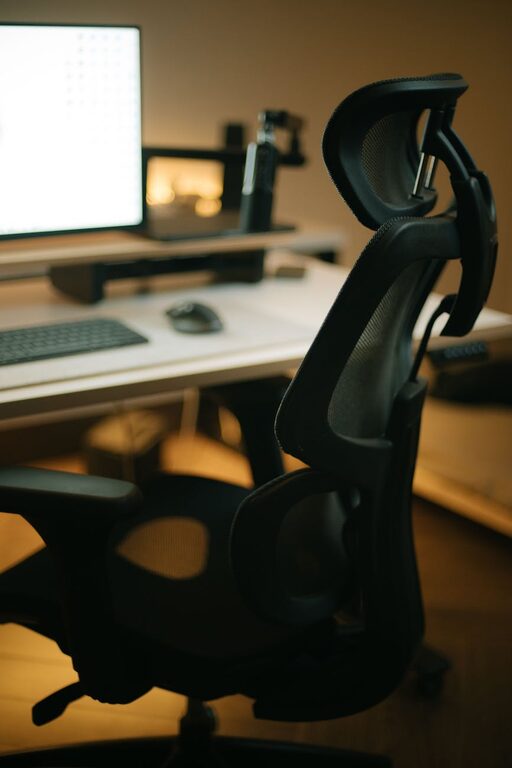When you spend hours working at a desk, having a comfortable and supportive chair is not just a luxury—it’s a necessity. A good desk chair can improve your posture, reduce fatigue, and help you focus better on your tasks. But with so many options available, how do you choose the right one? In this post, we’ll guide you through practical tips to select a comfortable desk chair that fits your needs and workspace.
Why Choosing the Right Desk Chair Matters
Sitting for long periods can strain your back, neck, shoulders, and hips. An uncomfortable chair can lead to poor posture and discomfort, affecting both your health and productivity. On the other hand, a well-designed desk chair offers proper support, encourages good posture, and helps you stay comfortable throughout your workday.
Key Features to Look for in a Comfortable Desk Chair
1. Ergonomic Support
Look for chairs that provide ergonomic features, which are designed to fit the natural shape of your body. Key ergonomic elements include:
– Adjustable lumbar support: Supports the natural curve of your lower back.
– Seat height adjustment: Allows you to set the chair height so your feet rest flat on the floor.
– Adjustable armrests: Supports your arms and reduces strain on your shoulders.
– Tilt and recline functions: Helps you change positions to reduce stiffness.
2. Seat Cushioning and Material
Comfort is largely influenced by the seat’s padding and fabric:
– Padding: Choose chairs with enough cushioning to support you without feeling too soft or too firm.
– Breathable materials: Mesh chairs offer good airflow, helping keep you cool; fabric and leather options are cozy but vary in breathability.
– Durability: Look for materials that will last and resist wear over time.
3. Seat Dimensions
Make sure the seat fits your body:
– Width and depth: The seat should support you comfortably without your knees pressing against the edge.
– Adjustable seat depth: Some chairs allow you to slide the seat forward or backward to better fit your leg length.
4. Mobility and Stability
Consider how the chair moves:
– Swivel base: Enables easy turning and reaching around your workspace.
– Casters (wheels): Choose wheels suited for your floor surface—hard casters for carpet and soft casters for hard floors.
– Sturdy base: A five-point base typically provides better stability.
How to Test a Desk Chair Before Buying
If possible, try out chairs in person. Spend at least 10-15 minutes sitting and adjusting the chair to different positions. Check if:
– Your feet rest comfortably on the floor or footrest.
– Your lower back feels supported.
– The armrests can be positioned correctly.
– You feel good sitting in various postures.
– You can move freely without strain.
If buying online, read reviews and check return policies in case the chair doesn’t meet your expectations.
Additional Tips for Maintaining Comfort
– Adjust your chair regularly: Your ideal chair setup may change depending on the tasks you’re doing.
– Take breaks: Stand up and stretch every hour to reduce stiffness.
– Pair with a good desk and monitor setup: Your whole workstation matters for comfort.
– Use accessories if needed: Footrests, cushions, or ergonomic mats can improve comfort.
Popular Desk Chair Types to Consider
– Task Chairs: Compact and generally more affordable, ideal for short to moderate use.
– Ergonomic Chairs: Built for long hours, loaded with adjustable features.
– Executive Chairs: Larger and often padded with leather or faux leather for added comfort and style.
– Mesh Chairs: Breathable design, reducing heat buildup.
– Kneeling Chairs: Alters posture and may relieve back pressure but requires adjustment time.
Budget Considerations: What to Expect
Comfortable desk chairs range widely in price. While it’s tempting to go for the cheapest option, investing in quality often pays off in durability and health benefits. Set a budget but prioritize features that support your body best.
—
Choosing a comfortable desk chair doesn’t have to be overwhelming. Focus on ergonomic support, adjustability, and materials to find a chair that fits your body and workspace. With the right chair, you’ll enjoy better posture, less discomfort, and more productivity. Take your time testing options, and your back will thank you!

